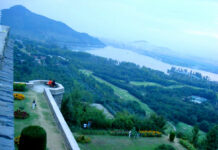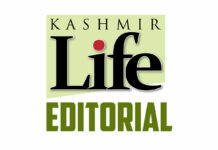Kashmir’s political parties have evolved in such a way that they see Srinagar as ‘seat of power’ and not a living entity. This tunnel vision has ignored the larger reality that over 13 lakh people live in the city that, over the years, is haphazardly growing in all possible directions.
At the same time, there is a massive surge in the floating population of security agencies, non-local labour force and now hoards of visitors too.
Instead of contributing, as is the case with other cities within and outside J&K, successive regimes have politicized the development of the city. This has resulted in Srinagar getting the dubious distinction of being the fourth dirtiest city in India. This should add to the shame quotient of state’s policy makers.
The ailing, and stinking Srinagar lacks what a capital city deserves. There are inadequate roads, no proper footpaths, highly un-reliable street lighting, no municipal management set-up and no dependable transport system. It looks more of a slum than a city. Part of the infrastructure that emerged over the decades suffered immensely during militancy when the counter-insurgency grid used fire as a weapon to douse the flames of insurgency.
Collapse of the system hurt the city as the resultant anarchy helped the ‘black-sheep’ to do whatever they could, from encroaching the roads to destroying the waterfront. Today the government is even unable to control the population of stray dogs.
This has strengthened the argument that politicians, policy makers and traders are behaving like visitors who come to spend some time in Srinagar and live like tourists. Their net contribution is only the per capita waste they add to the municipal garbage that has now reached unmanageable levels.
It is a rage among political parties to showcase their strengths in Srinagar. They manage massive crowds from the countryside and drive them to Srinagar to create an impression. Regardless of how these crowds are managed, Srinagar infrastructure nearly collapses under the load. The recent meeting of the rural development ministry is just an instance in which the massive overload on roads crippled the public transport system. Roads remained closed for hours together to a level that links to all hospitals were down for most of the day.
Srinagar needs a new master plan and enough of resources to implement that. SMC must be overhauled and repaired, pollution levels to the Jhelum must fall and for specialized attention the government should have a full-fledged minister to take care of it.
Instead of contributing, as is the case with other cities within and outside J&K, successive regimes have politicized the development of the city. This has resulted in Srinagar getting the dubious distinction of being the fourth dirtiest city in India. This should add to the shame quotient of state’s policy makers.
The ailing, and stinking Srinagar lacks what a capital city deserves. There are inadequate roads, no proper footpaths, highly un-reliable street lighting, no municipal management set-up and no dependable transport system. It looks more of a slum than a city. Part of the infrastructure that emerged over the decades suffered immensely during militancy when the counter-insurgency grid used fire as a weapon to douse the flames of insurgency.
Collapse of the system hurt the city as the resultant anarchy helped the ‘black-sheep’ to do whatever they could, from encroaching the roads to destroying the waterfront. Today the government is even unable to control the population of stray dogs.
This has strengthened the argument that politicians, policy makers and traders are behaving like visitors who come to spend some time in Srinagar and live like tourists. Their net contribution is only the per capita waste they add to the municipal garbage that has now reached unmanageable levels.
It is a rage among political parties to showcase their strengths in Srinagar. They manage massive crowds from the countryside and drive them to Srinagar to create an impression. Regardless of how these crowds are managed, Srinagar infrastructure nearly collapses under the load. The recent meeting of the rural development ministry is just an instance in which the massive overload on roads crippled the public transport system. Roads remained closed for hours together to a level that links to all hospitals were down for most of the day.
Srinagar needs a new master plan and enough of resources to implement that. SMC must be overhauled and repaired, pollution levels to the Jhelum must fall and for specialized attention the government should have a full-fledged minister to take care of it.









